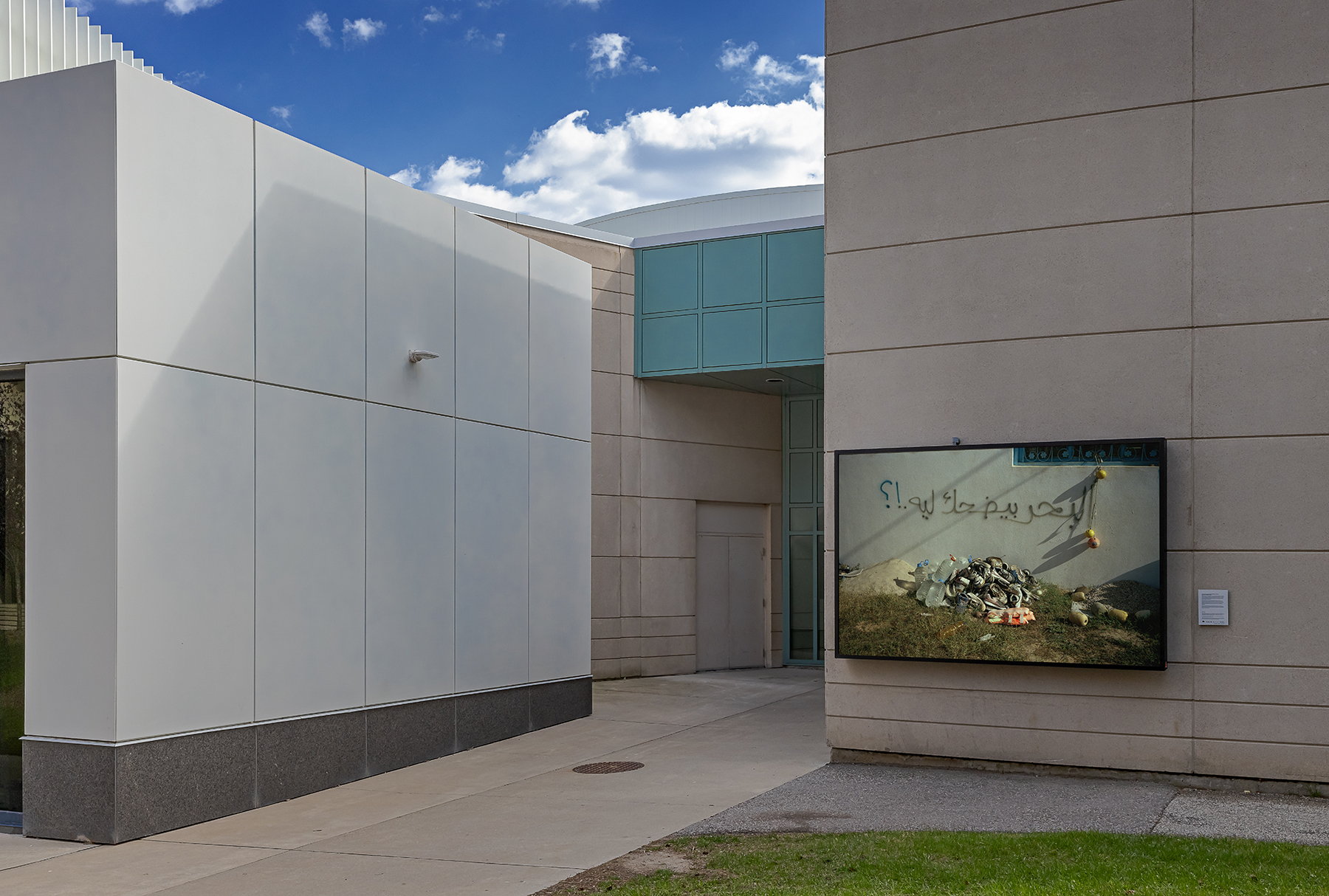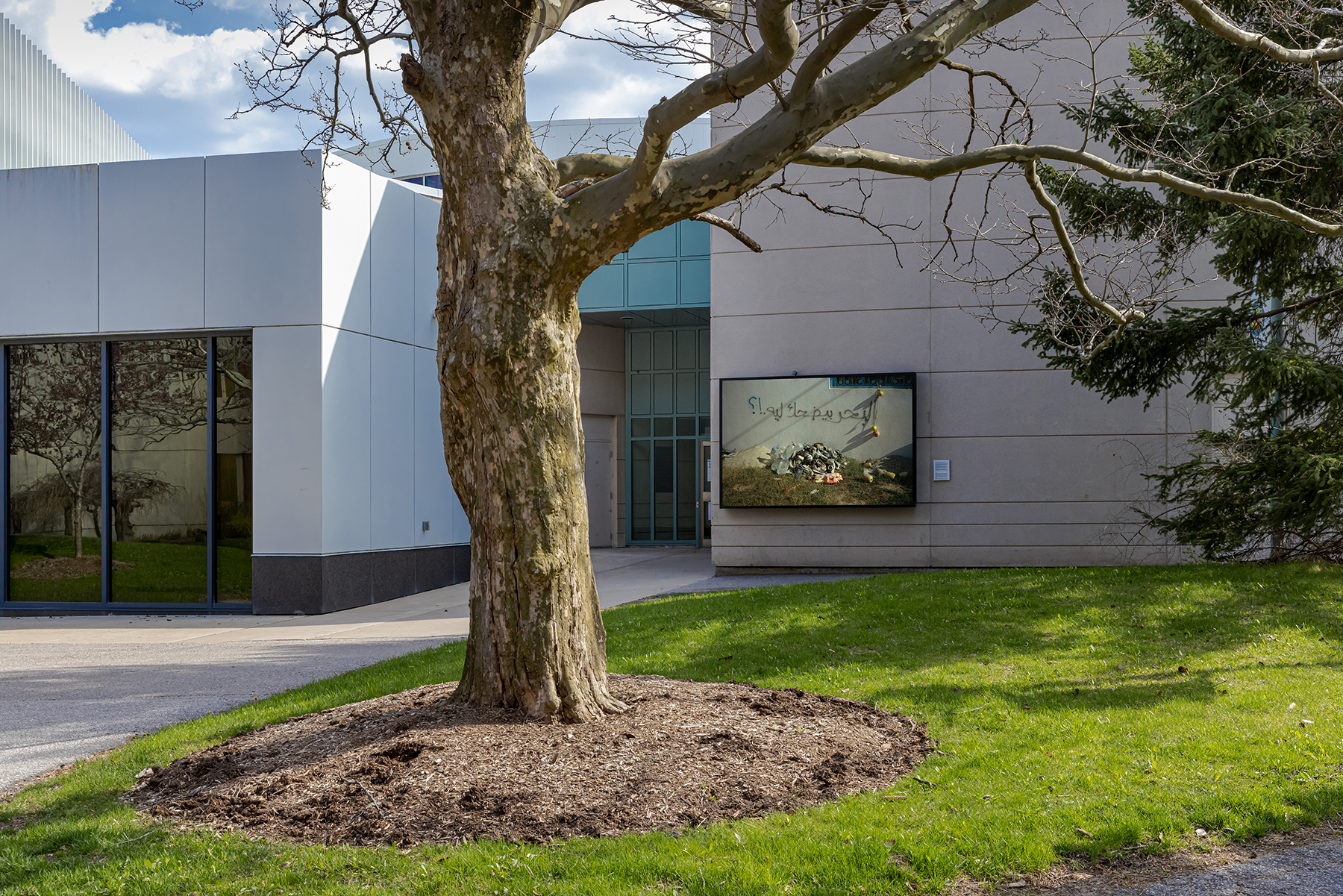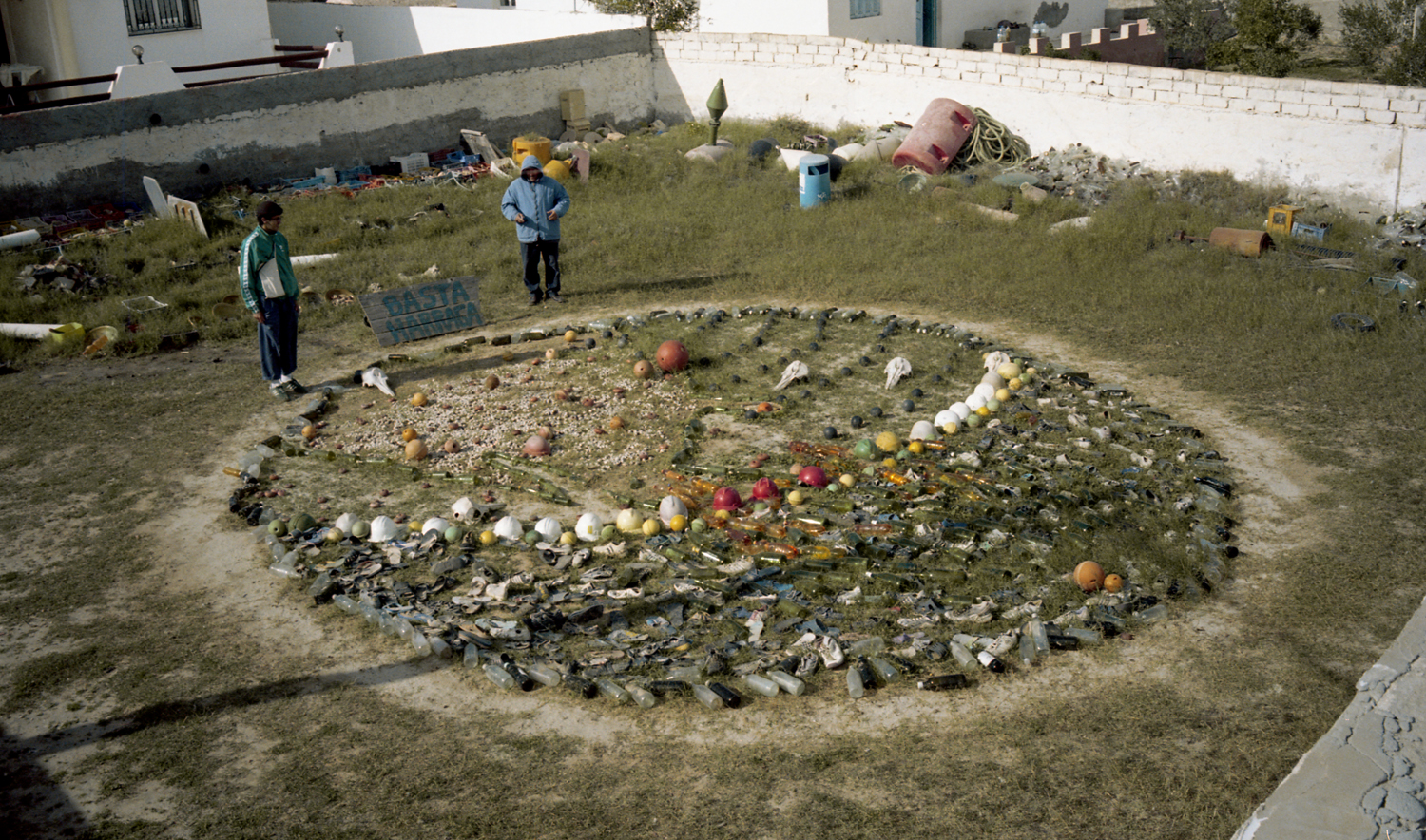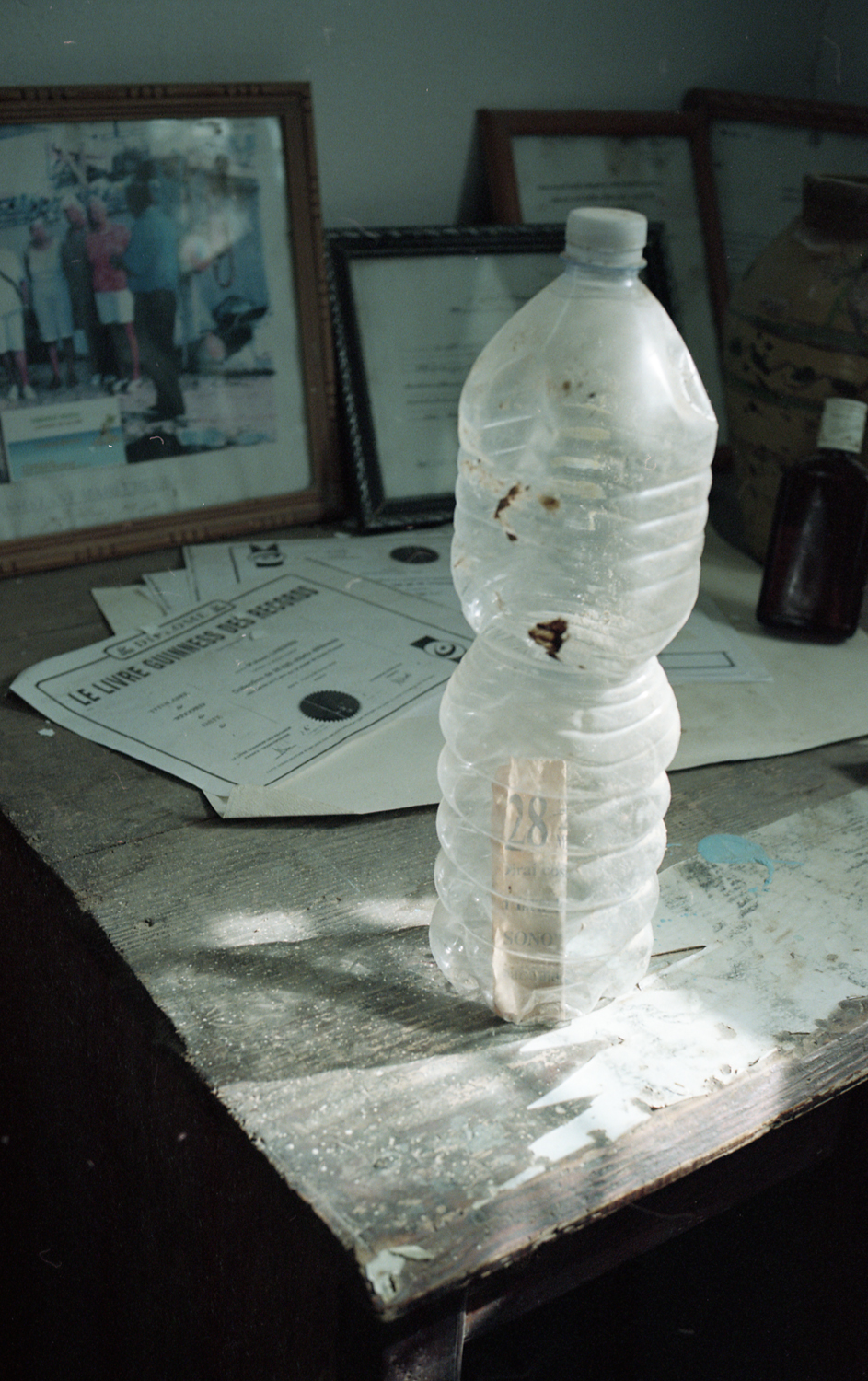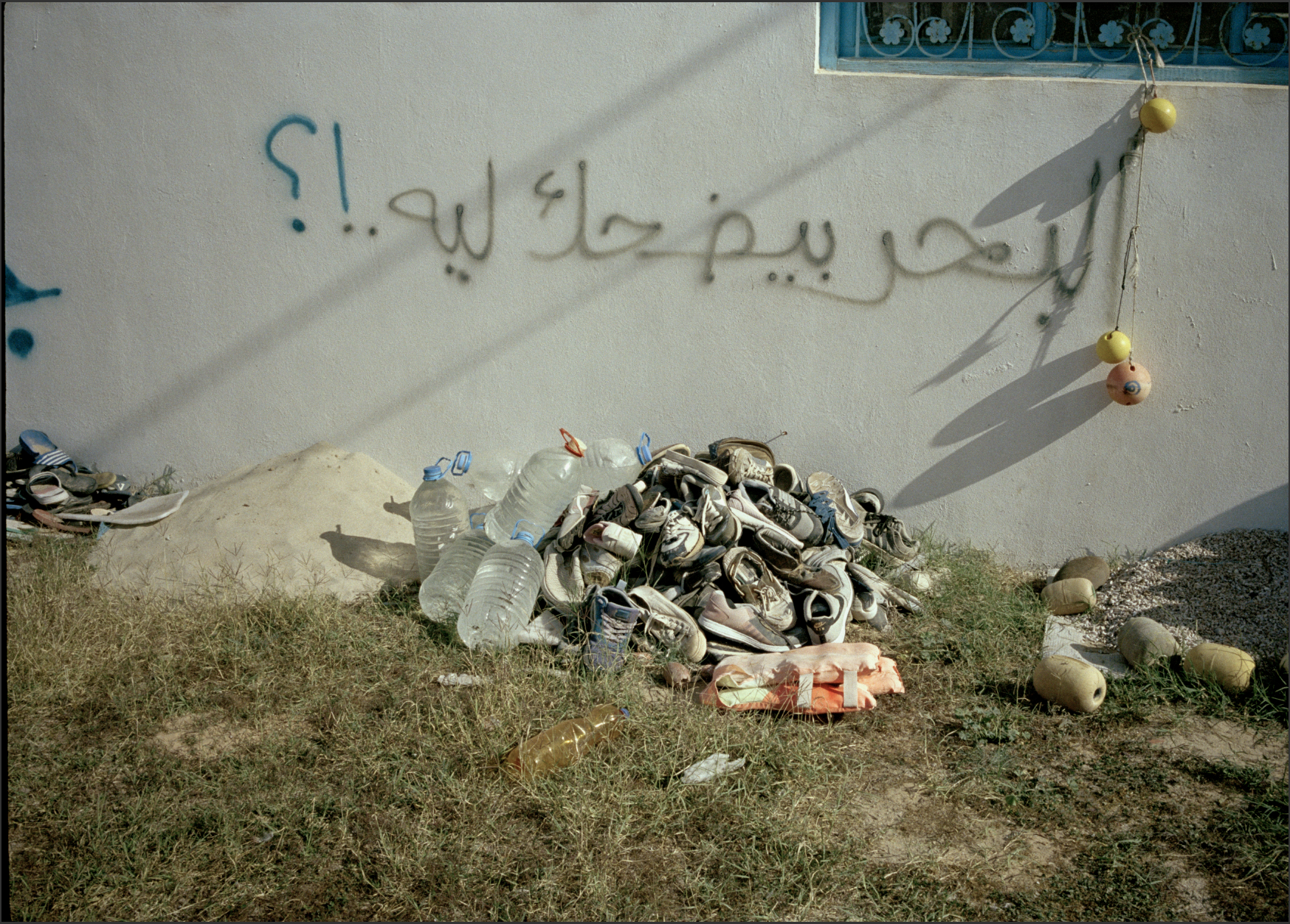Blackwood Gallery
![]()
![]()
‘Why does the sea laugh?’(El Bahr Biyidhak Leh) is a photograph that was made in participation with the Lost in Transition project by Yassine Rachidi and Amy Douglas-Morris. The graffiti refers to a song by Sheikh Imam and a poem by Nagib Sorour, an Egyptian communist, poet, and director. Sheikh Imam is a radical Egyptian composer and singer who was a political prisoner for 18 years for speaking out against corruption and oppression in Egypt.
Lost in transition is an exhibition exploring irregular migration and its traces.
In darija (north African dialect) migrants are commonly named harraga [meaning : the burners]. They burn borders, steps but also their identity, their papers and their traces. Among the remaining traces of those transitions lays clothes, shoes, dolls, deflated zodiacs and letters thrown into the sea collected by Mohsen, a former postman in Zarzis (south Tunisia) converted into a poet.
![]()
![]()
![]()
The images were taken in Mohsen’s garden in his Musée de la Mémoire de la Mer et de l'H
omme, Zarzis, Tunis. Lihidheb Mohsen is a poet whose collection of the objects, plastic, and bottles found in the sea started off as an ecological project. It gradually took a socio-political turn, reflecting on the migration crisis in the Middeterrenean of the past 30 years. The shoes and personal objects thrown on the shores and then collected become the only existent physical memorial. The p
resence of these objects serves as an eerie reminder of the lives lost at sea, while also speaking to a long legacy of colonialism in the Maghreb that continues to haunt the present.
![]()
